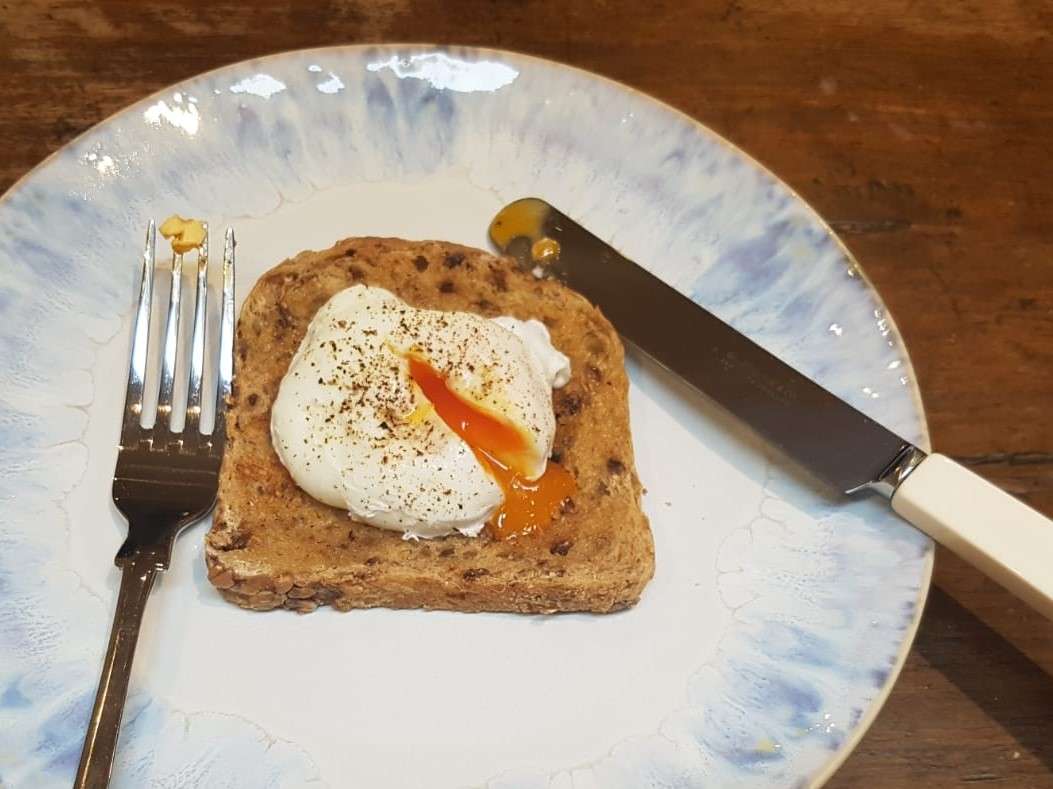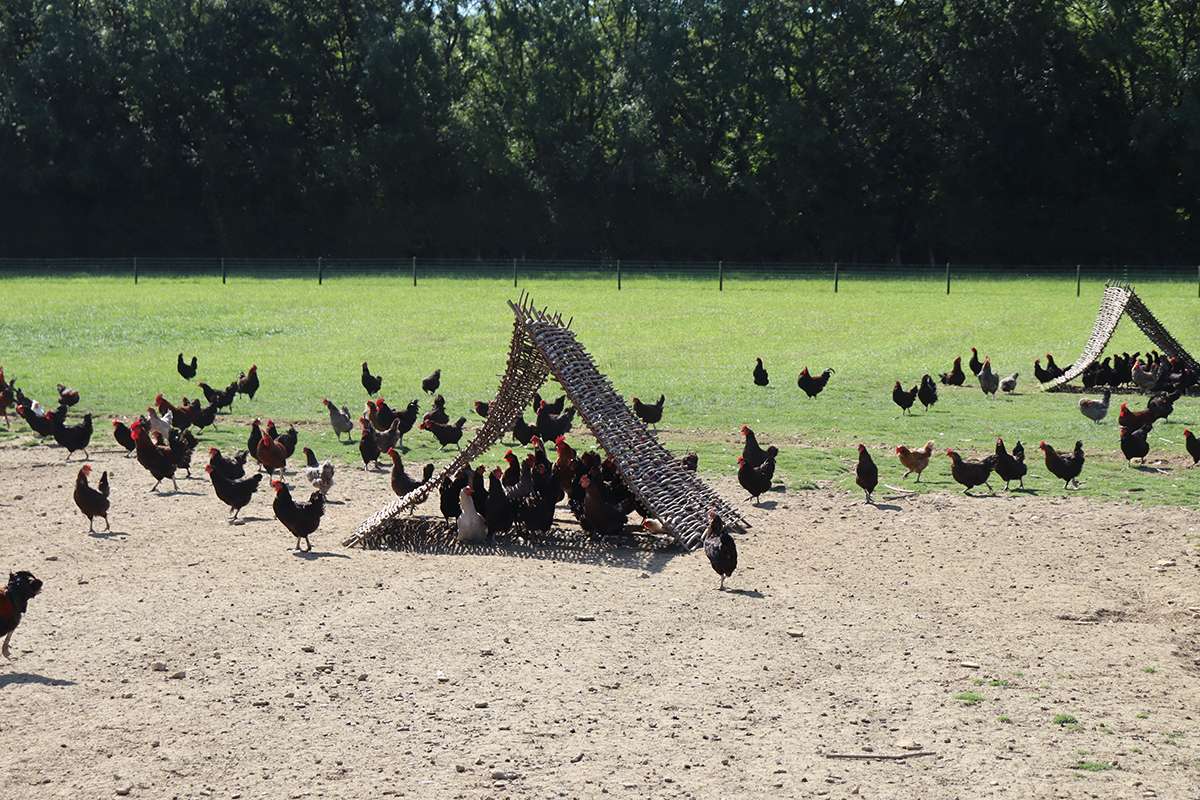Cacklebean eggs are the stuff of legend. I first heard of them around a year ago when I was visiting Wild Thyme in Chipping Norton.
Nick, the chef there, waxed lyrical about the eggs, and shortly afterwards I was able to taste one at The Tea Set – absolutely fabulous!
Ever since I have wanted to visit the renowned egg farm to see what it was all about, so when my travels took me back to Chipping Norton this year, I got in touch with Paddy and Steph Bourn.
SD: Your eggs are renowned for their flavour and rich yolk colour, how do you achieve this?
PB: Lots of people ask us about the diet. It’s a natural cereal product, but it’s taken us a long time to get it right. It takes 10 days for food to pass through a chicken and reach the eggs, so experimentation is naturally slow as you have to wait before you can adjust the feed and try again.
We didn’t create the feed for the flavour in the eggs, though. We created it first and foremost for the hens and only later considered the flavour of the eggs, but unsurprisingly a healthy diet for a hen produces excellent tasting eggs.
Hens are very good at just eating what they need, so making sure that they have everything they need is what we focus on. There’s no point adding flavours to the feed if the hens don’t eat it or can’t absorb it anyway.
Flavour in eggs is not just about diet. It’s also about how long the hen takes to produce them. We keep a mix of Maran, Araucana and Arlington White chickens. These are all traditional breeds that haven’t been specially bred to produce eggs more frequently.
Marans are also dual purpose: They can be used both for laying eggs and for meat afterwards. In the past dual-purpose chickens were the norm, but nowadays most chickens are bred either to be fat for meat or skinny for laying eggs.
Different types of birds produce different types of eggs. The Arlington Whites produce a bigger yolk in a white shell, while the brown hens produce smaller yolks in brown shells.
The green shell eggs we sell come from a chicken I bred myself – a cross between a Maran and an Araucana.
SD: So you breed your own chickens as well? That’s quite unusual, isn’t it?
PB: Yes, most egg farms will bring in new flocks from elsewhere to replace the spent hens. We keep our own cockerels and give them a life among the breeding flock for 31 weeks.
It’s not perfect, but it’s much longer than most cocks get to live. I enjoy the breeding. I like to see the young chicks hatch. It would be a bit boring if I were just collecting eggs all day!
We also move the pens around the fields on a regular basis to rest the ground and make sure that disease doesn’t develop inside the pens, and when the chickens are old, we re-home them.
It’s hard work and I get a bit fed up when people compare us to other egg producers, because we’re operating in a completely different way.
SD: How did you get started?
PB: We started with 30 Maran hens and then had to find a cockerel to grow the flock, but you try and find a cockerel. No-one keeps cockerels.
It took us some time to get the initial flock going, but now, because the Marans can live 5-6 years as a traditional breed, we have 5 generations of hens on the farm.
Normal hens only live 72 weeks, some of ours are now 200 weeks. They’re a bit seasonal, though: They tend to give up a bit during the winter, which can be difficult for chefs who expect a reliable supply throughout the year.
SD: How do you manage supply and demand?
PB: We have more than what we need as a base and it’s always easy to sell more, because our customers will just swap them out with the normal eggs they buy when they can’t get ours, to buy more from us when they’re available.
SD: How did you become such legends?
PB: There was a chef at The Kingham Plough near to us that started using our eggs. We used to give him a few for free and then when he left The Kingham Plough, he went to work in a few other places and met other chefs and told them about our eggs and it grew from there.
It’s always good to work with chefs that are truly passionate about our eggs.
SD: I love the branding you have. It’s very unusual for an egg company to have such a beautiful logo.
PB: The inspiration is highly personal. It all started with a tin of baked beans that my father bought years ago in the sixties food shop Big Biba in Kensington, London, where the Wholefoods store is now.
It was a beautiful shop with an art deco theme. Even the tins of baked beans were stunning. Big Biba no longer exists as a shop. House of Fraser bought it a while back and didn’t do anything with it for ages, but more recently has resurrected its clothing brand under the name of Biba.
The tin of baked beans my father bought lived on his desk for years while I was growing up. When we were considering our own brand for the eggs, I wanted something as visually stunning as that tin of baked beans so we used it as inspiration.
You can see the B in the centre of our egg comes from that and the art deco styling too. At the time, Steph had just bought a limited-edition copy of Alice and Wonderland with a bold, natural illustration of foliage on the front cover.
That’s what fed into the rest of the design.
D: How has the pandemic affected you?
SB: Well, the majority of our business was with restaurants prior to lockdown so we had to adapt pretty quickly. We’ve gone from doing 20-30 boxes/week for retail before lockdown to 400 boxes/week now.
It’s easier supplying restaurants because there’s less packing involved, but the retail business has been great in terms of raising our brand awareness.
We haven’t seen many of our former restaurant customers reopen yet, but as they do it could be difficult to manage demand. It’s going to be pretty much first come first served I think.
SD: What are your plans for the future?
SB: Paddy finds it difficult to sit still for very long and he’s met a chef who is interested in doing something with the space, so we are looking at opening our own Cacklebean Kitchen together with a farm shop with seasonal produce.
We don’t want to grow the farm any bigger, because then we wouldn’t be able to put the same level of care into what we’re doing and we wouldn’t have a niche product any more.
We are looking at getting a liquid egg machine too. Not many egg farms have one and it would help us sell the smaller, pullet eggs.
SD: There seem to be a lot of chickens wandering around outside the fences. Does that concern you?
SB: No, they always come back to the pens at night and they never wander onto the road, but it’s impossible to keep them inside the fences.
Chickens don’t care for fences. They just fly up onto the wire and then down the other side.
They seem to have an innate belief that the grass is always greener on the other side.







